
Let's talk Great Anglo-French White and Orange Hounds
Great Anglo-French White and Orange Hounds were originally bred as hunting dogs and remain a popular choice in their native France for their sporting prowess. Constantly on alert, Great Anglo-French White and Orange Hounds make for good watchdogs, but not guard dogs due to their amiable temperament. The breed is not widely known outside France but despite their sporting spirit, they’re affectionate and calm around humans, once trained – and providing their energy needs are being satisfied. No small feat!Official name: Great Anglo-French White and Orange Hounds
Origins: France

| Drooling tendencies |
|
Warm weather? | |
| Shedding level | Suited to apartment living? | ||
| Physical activity needs (high, low, medium): | Moderate | Kid-friendly? |
|
| Compatibility with other pets | Can stay alone?* | 
|
* We advise against leaving pets alone for long stretches.
Companionship can prevent emotional distress and destructive behaviour.
Speak to your veterinarian for recommendations.
Every pet is different, even within a breed; this snapshot of this breed’s specifics should be taken as an indication.
For a happy, healthy and well-behaved pet, we recommend educating and socialising your pet as well as covering their basic welfare, social and behavioural needs.
Pets should never be left unsupervised with a child.
Contact your breeder or veterinarian for further advice.
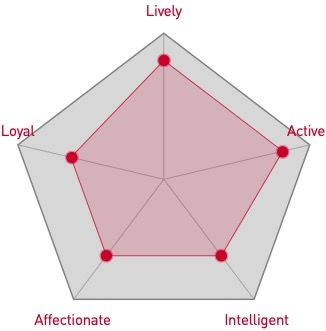

| Baby age | Birth to 2 months |
| Puppy age | 2 to 15 months |
| Adult age | 15 to 5 years |
| Mature age | 5 to 8 years |
| Senior age | from 8 years |
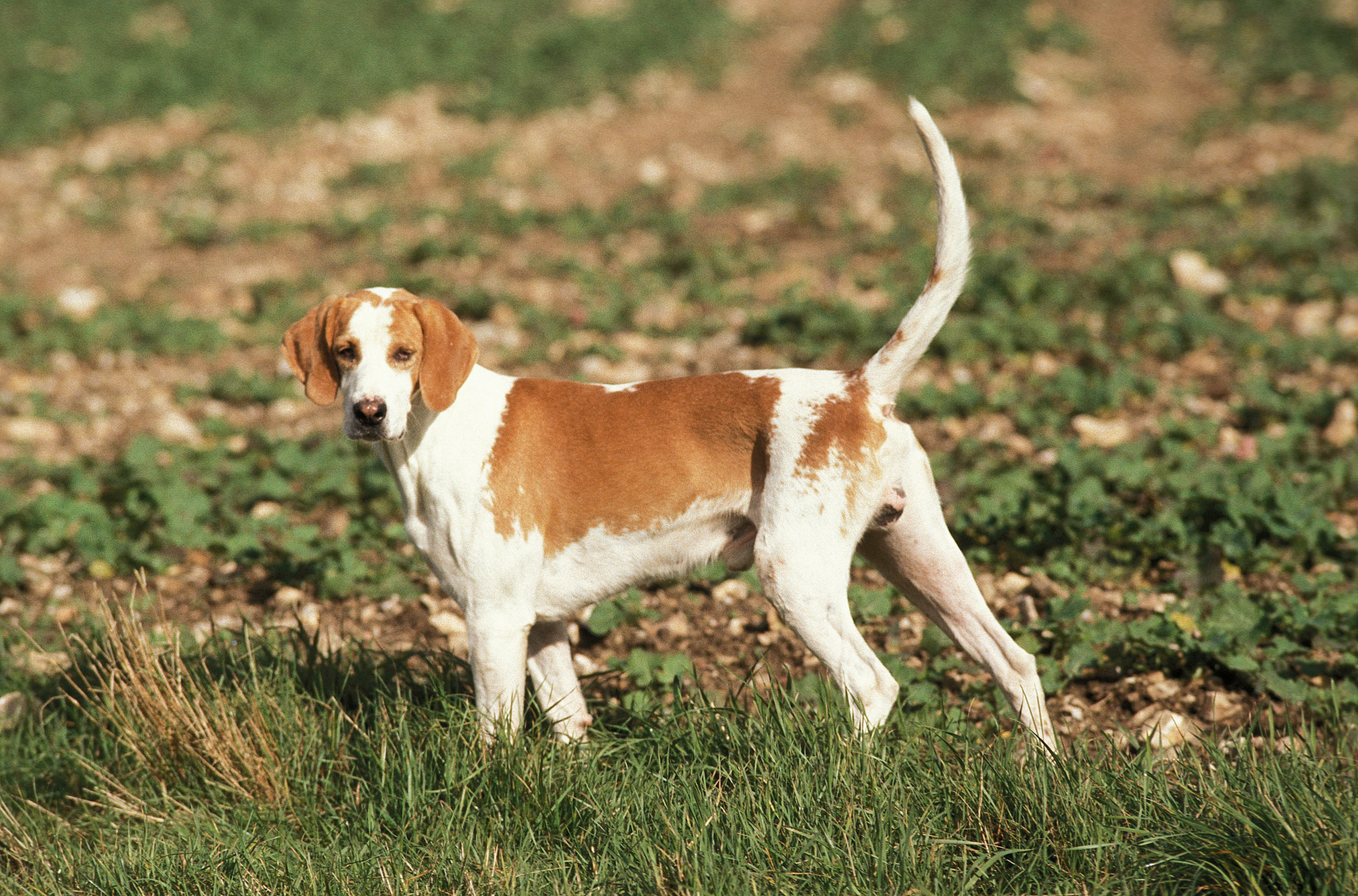
1/7
Get to know the Great Anglo-French White and Orange Hound
All you need to know about the breed
The athletic Great Anglo-French White and Orange Hound was bred for the outdoors. These scent hounds are revered for their tracking and chasing skills, but there’s more to them than their talent: they have a reputation for being gentle with children (once trained) and have a calm temperament, showing affection for their human family.
Thanks to their intelligence and working mentality, training a Great Anglo-French White and Orange Hound should be relatively simple, although confidence and consistency will be essential - coupled with snacks as rewards, which count as part of their daily food rations.
While trained Great Anglo-French White and Orange Hounds get on well with children they should never be left unattended with them. Small, furry animals are out, including cats, because of the breed’s strong prey instinct - best to prevent any upsetting accidents.
The breed’s significant energy level and exercise needs means they’re made for a sporty owner, with a lust for life outdoors.
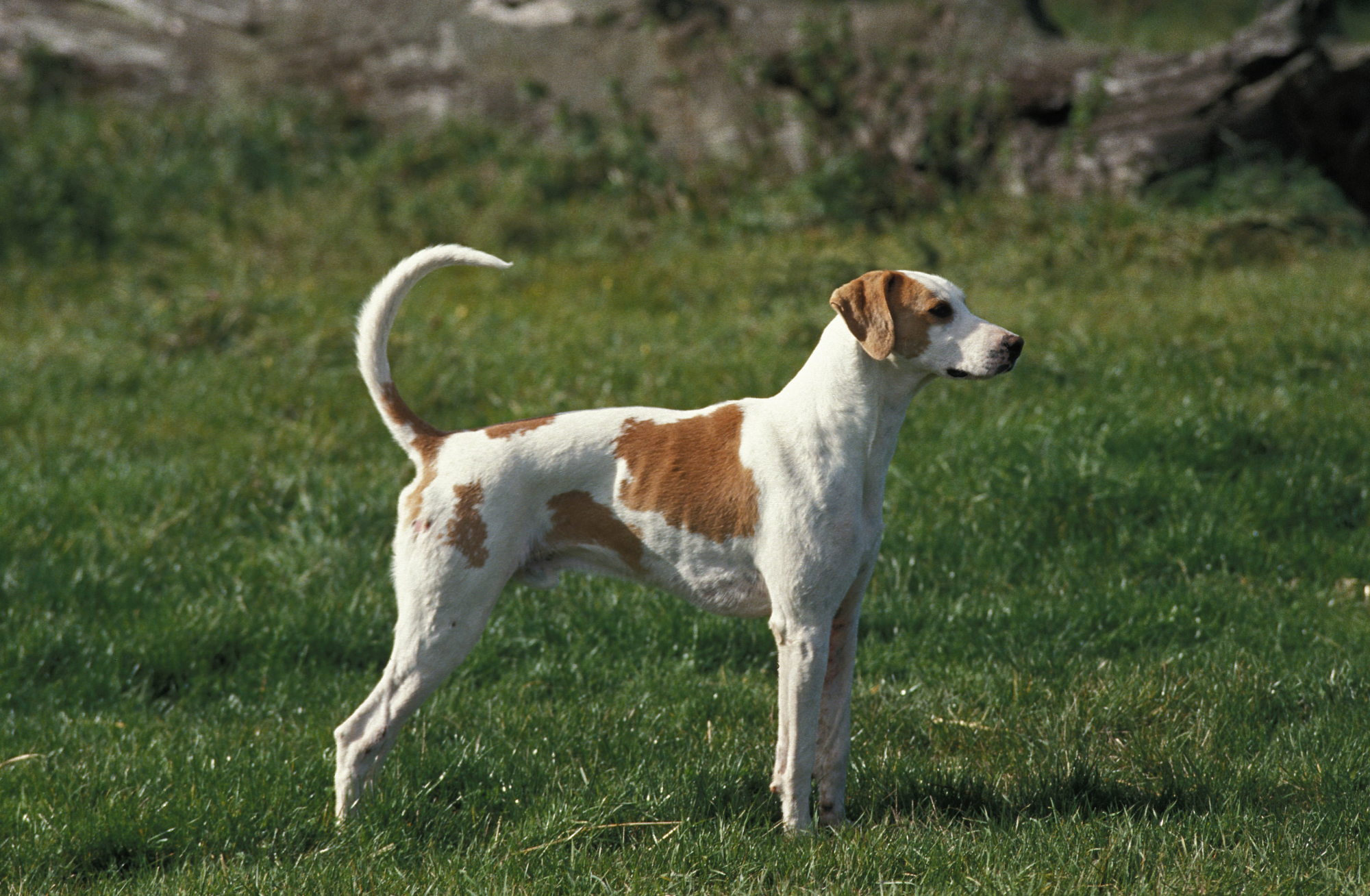
2/7
2 facts about Great Anglo-French White and Orange Hounds
1. Street life (is out)
Despite being a friendly family companion, the Great Anglo-French White and Orange Hound was not meant for the city. With their sporting origins, this breed will thrive the closer they are to nature.
2. The more the merrier
The Great Anglo-French White and Orange Hound is a pack-dog through and through. They get along with other dogs (both sexes) and therefore will be more content with some canine company. This will keep the boredom at bay and help to keep any separation anxiety to a minimum.
History of the breed
Great Anglo-French White and Orange Hounds descend from several French hunting dogs, such as the Billy, as well as the English Foxhound. Out of the three Grand Anglo-Français breeds, this is the canine that most closely resembles their English ancestors, with a similar-shaped head.
They were bred to be sporting dogs, working in packs to hunt deer, boar, and smaller animals like foxes. Today, Great Anglo-French White and Orange Hounds are an incredibly rare breed outside of France. Even within their home country, few litters are recorded annually.
Like many dog breeds, the Great Anglo-French White and Orange Hound almost disappeared after two World Wars. But not completely, thankfully. In 1983, the breed was recognised by the Fédération Cynologique Internationale (FCI).

4/7
From head to tail
Physical characteristics of Great Anglo-French White and Orange Hounds
1. Body
A sturdy yet lithe body of even proportion.
2. Eyes
Large eyes that are dark brown in colour.
3. Coat
Coat colour is white with either white-lemon or white-orange marks.
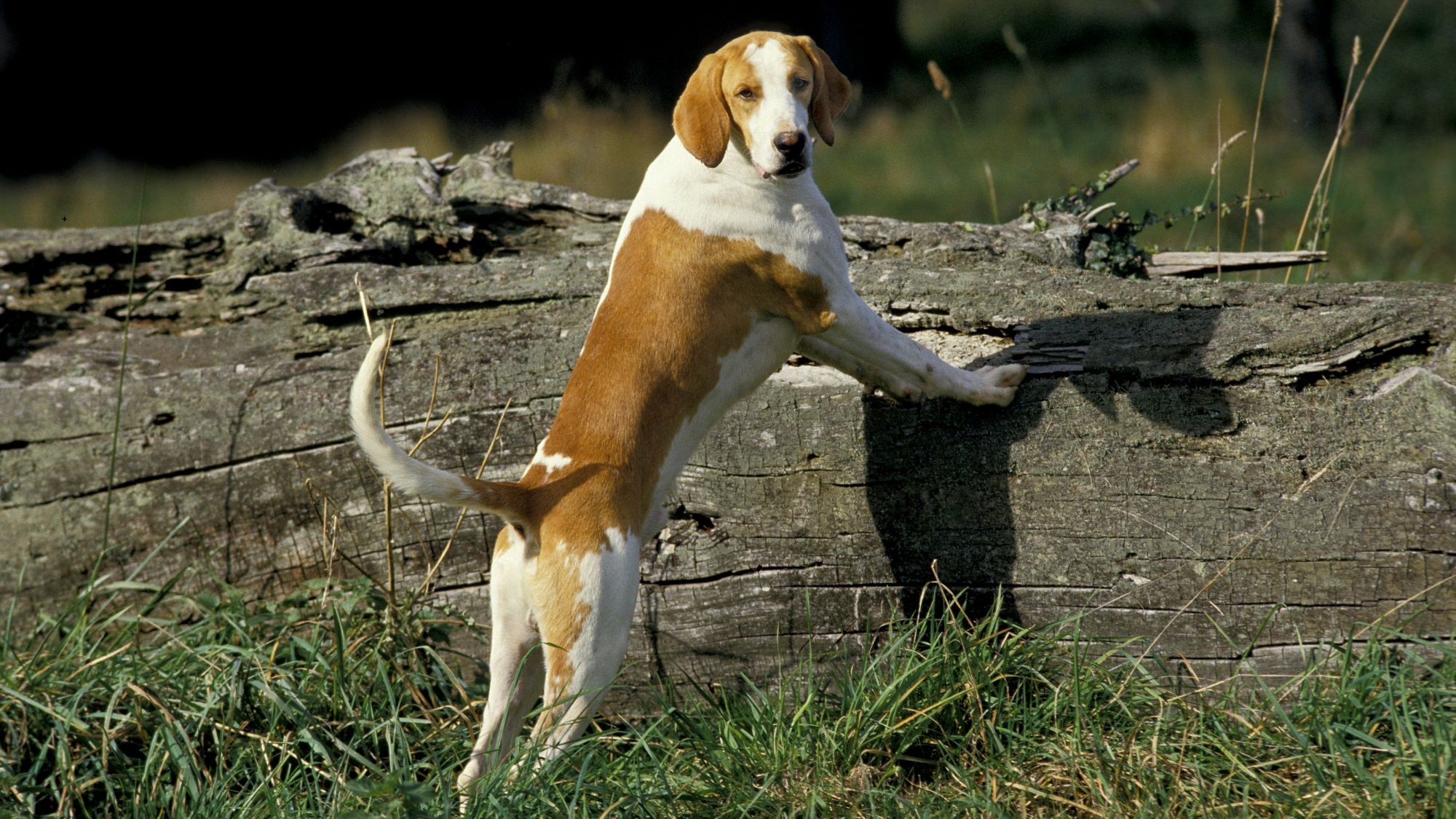
5/7
Things to look out for
From specific breed traits to a general health overview, here are some interesting facts about your Great Anglo-French White and Orange Hound
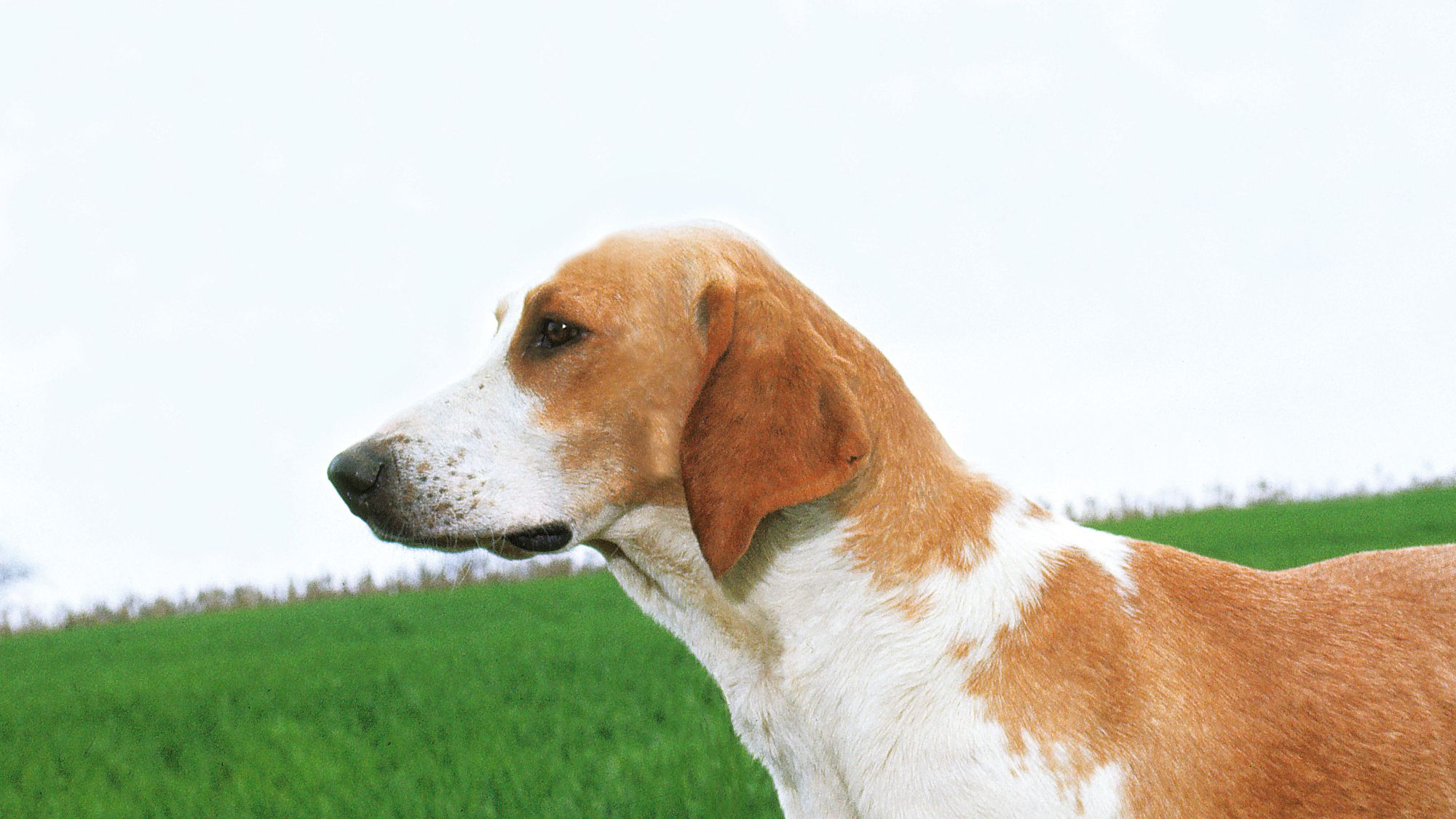
6/7
Caring for your Great Anglo-French White and Orange Hound
Grooming, training and exercise tips
The coat of the Great Anglo-French White and Orange Hound requires minimal grooming - one weekly brush will do the trick. Those gorgeous drop-shaped ears will need to be checked for any build up of wax or debris. Carefully cleaning and drying them after play-time outside will help to prevent ear infections. Their nails should also be trimmed and teeth cleaned regularly. Great Anglo-French White and Orange Hounds require a substantial amount of exercise – ideally between one to three hours per day of long walks (on leash) or hikes, combined with catch and interactive play sessions in an enclosed space. Otherwise they are likely to catch a scent and abandon you to the chase. When it comes to training, like most breeds, start early with your Great Anglo-French White and Orange Hound and take a firm but gentle approach. Positive training methods will be helped by food rewards in the early days, so make sure they come out of your dog’s daily rations to avoid unnecessary weight gain.7/7
All about Great Anglo-French White and Orange Hounds
It could go either way. A confident owner is a must for a Great Anglo-French White and Orange Hound. Due to their high energy and large size, they can be a lot to handle for some individuals. Ideally, the breed will be most content with an active owner, who will take a firm, consistent approach to training and provide plenty of space to run around in.
Great Anglo-French White and Orange Hounds are not known to be aggressive. Many make this assumption but once trained they make gentle playmates for children – although like most breeds they should never be left unsupervised with them. Despite their friendly and affectionate temperament, most Great Anglo-French White and Orange Hounds today are kept as working dogs.
Read more on this topic


How to adopt a dog

Things to consider before getting a dog
Sources
1 - Veterinary Centers of America https://vcahospitals.com/
2 - Royal Canin Dog Encyclopaedia. Ed 2010 and 2020
3 - Banfield Pet Hospital https://www.banfield.com/
4 - Royal Canin BHN Product Book
5 - American Kennel Club https://www.akc.org/